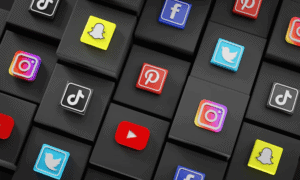Impact of Digital Economy on Education
Education is not a mere concept it is considered a life journey that is worthy for all of us, of our time and trust. It is not deniable that education is facing challenges and demands structural reforms. The reforms must include all parts of the education process, and these reforms require plans for education management, setting policies for offering training for teachers and using new technologies of internet.
Today we live work and play in a world of change. So to enable education to compete with 21 century, schools must use the latest technological development and e- learning tools. This will help students to acquire the basic skills and knowledge. In addition, utilizing the information and communication technologies will have great impact in all education activities, as a result of using the digital technologies which help in accessing and storing the information in easier and cheaper way.
The most important change in education is to look at education in acritical eye and to break all the traditional tools that make education, rigid, stagnant and incapable to cope with recent developments. Governments, business sector and policymakers all have the responsibility to lead and control the transition towards digitization, as it has become an essential component of the social life and development.
Investing in education must be a priority to mirror the country’s ambition to develop and strengthen the economic growth. Moreover, it will give every child a chance to have a good start for their lives in a rapidly changing world. Developing educational tools will actively engage students and schools with what is happening in the community and will also help in creating more jobs opportunities.
There is no doubt that e- learning which is a kind of education that takes place through the internet is becoming more and more popular, it establishes for the environment for delivering the educational material in an easy and low price way. It all goes under the umbrella of digital economy that promises for better future and better education.
It is highly recommended to transfer the education process from rigidity to innovation and aspiration. This can be achieved by starting to use the recent multimedia technologies, like usage of computers extensively. Teachers can use the multimedia technology as an innovative tool for learning, they can incorporate digital media elements in presenting the material; therefore students will learn better.
Moreover, technology is changing the classroom experience. The concepts of paperless and pen less to be used in classrooms are emerging rapidly as an alternative tool to the old methods of learning. Tablets and compact computers that allow writing notes directly on the screen with special pen will make the education process easier and joyful.
One of the most important educational tools is online learning. It has become an essential way for acquiring knowledge through either enrolling in credited courses; where students enroll in tertiary education, or to take professional training certification preparation. The advancement of education technology has enabled online education to become more accessible. Students only need a computer, internet connection and basic IT skills.
Online education also serves the purpose to make education available for all, as it might be in the future an alternative to traditional tools of education. Applying “makerspace” trend is considered to affect the whole education process and online learning positively. It is worth mentioning that “makerspace” is acollaborative work space inside the school or library that allows for wider space for creativity and innovation, in addition to engaging students with the essential skills that are important in today’s technological age.They include various machines including for instance 3D printers, laser cutters.
Students need to be able to think critically, problem solving and collaborate to be successful in the future. In order to achieve this purpose, schools must develop the use of “makerspace” trend in libraries. They can shift from the traditional image of the library into a colorful airy room where students can use technology for creation and innovation. It is essential to believe in the importance of technology as an essential motivator for shifting towards the “makerspace” trend, using 3D printers and also providing libraries and classrooms with other digital equipment.




























